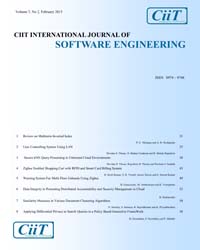Efficient Layout of Fredkin Gate with Minimized Area Methodologies
Subscribe/Renew Journal
Quantum cellular automata (QCA) is a new technology in nanometre scale (<18nm) to support nano technology. QCA is very effective in terms of high space density and power dissipation and will be playing a major role in the development of the Quantum computer with low power consumption and high speed. This paper describes the design and layout of a fredkin gate based on quantum-dot cellular automata (QCA) using the QCADesigner design tool. The fredkin design is based on combinational circuits which reduces the required hard-ware complexity and allows for reasonable simulation times. The paper aims to provide evidence that QCA has potential applications in future Quantum computers, provided that the underlying technology is made feasible. Design has been made using certain combinational circuits by using Majority gate, AND, OR, NOT in QCA. The QCA is a novel tool to realize Nano level digital devices and study and analyze their various parameters.
Keywords
Fredkin Gate, Nano-Technology, QCA.
User
Subscription
Login to verify subscription
Font Size
Information

Abstract Views: 262

PDF Views: 3



